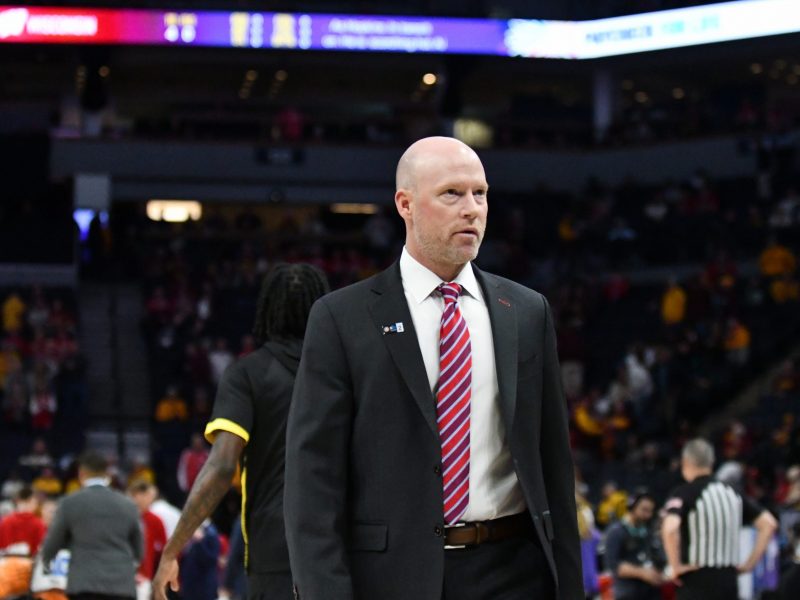Chance Stephens’ first season with Maryland men’s basketball was over well before it even started.
Stephens tore his patellar tendon in June 2023 weeks after transferring across the country from California’s Loyola Marymount to Maryland. He didn’t play for the Terps and spent the last 10 months recovering.
But that time off the court hasn’t changed Stephens’ unwavering love for basketball or made him question his decision to join the Terps. If anything, it’s strengthened both.
“I’ve always wanted to play at the highest level,” Stephens said. “The last school I was at, it was a really good school. It was in a good conference, but it wasn’t really where I wanted to be. This, this right here is perfect.”
Stephens had Terp ties before electing to transfer. His father and Maryland assistant coach David Cox attended high school together at Washington, D.C.’s, St. John’s College High School and maintain a close relationship.
Cox and Stephens’ father met for dinner one night when Stephens was in eighth grade and Cox was Rhode Island’s head coach. That night, Stephens received a call from his father and learned of his first collegiate offer. He committed to Rhode Island in 2020 and said he probably would still be there now if Cox hadn’t been fired in March 2022.
“That’s my second father, almost. He’s really close to me,” Stephens said of Cox. “For me, in a school, I basically look for a great relationship with a coach, because I feel like that could help a player.”
The California native ended up at Loyola Marymount and averaged six points a game on 37.4 percent shooting from three during his freshman year before entering the transfer portal.
[Last offseason’s failures doomed Maryland men’s basketball. This cycle may shape its future.]
His bond with Cox and ambition to compete at a high-major program landed him at Maryland.
Stephens arrived on campus in May but tore the patellar tendon in his knee after about two weeks of team workouts. He stayed with his aunt for about two weeks after surgery and said that stretch was worse because the swelling in the knee made it hard to sleep.
Stephens was largely stuck in his new room for the next two months until starting rehab. He began weight training and lifting around October to regain strength and mobility in his leg.
“Doc said it was supposed to be six months, but that was supposed to be just for like the knee to heal,” Stephens said. “After that, I was still having problems. I didn’t get my leg strength back because I lost all that just from sitting for like three months.”
Stephens said he still occasionally gets pain in his quad muscles from his lack of leg strength. That’s the last thing he feels he needs to overcome to resume playing without pain.
The transfer’s time away from the court initially made it hard to connect to his new teammates, but he eventually settled in once in-season workouts started.
“When I first got hurt, I was kind of taken away from the team, not able to do the activities with them. It was kind of tough because they probably didn’t know who I was,” Stephens said. “Over the course of the season, just like talking to them and them getting to really know me, it’s all grown us closer.”
[Maryland commit Derik Queen flashed star potential in McDonald’s All-American game]
Stephens eventually returned to the court for limited non-contact practice sessions around January. He participated in the team’s warm-up stretches, basic ball-handling drills, defensive and passing exercises and scout team segments. He stepped away to lift with a performance trainer once the team started live-action drills.
He hopes to return to those segments by the end of April — even if his leg strength isn’t back to 100 percent.
“I just want to get out there and play and because I feel like that’ll help with my leg strength too, just like getting up and down, guarding people and just getting back into all that stuff because I don’t want to get back to that too late,” Stephens said. “But then again, I don’t want to hurt myself again.”
Stephens aims to average 12 points per game next season and play without pain. He’ll have to work his way into a Maryland rotation that will look much different than last year, with two players graduating and four already in the transfer portal.
He feels that he can contribute much-needed outside shooting to a Maryland team that finished 350th of 362 Division I programs in three-point shooting percentage at 28.9 percent.
But more than anything, he just can’t wait to get back on the court.
“I feel like once I get back, I’ll never take it for granted again,” Stephens said. “I’ll play hard every game.”



